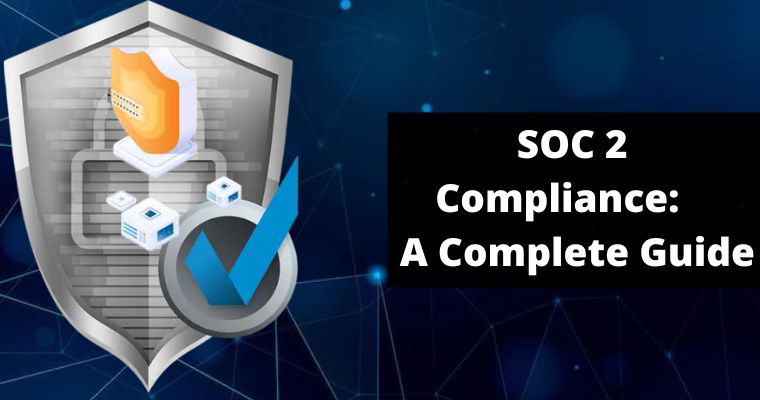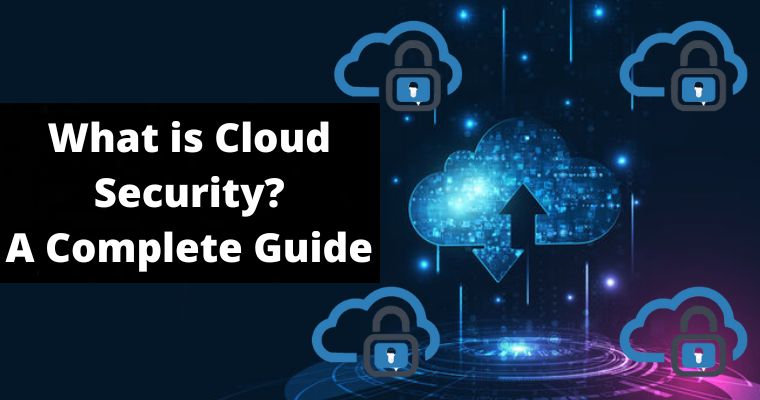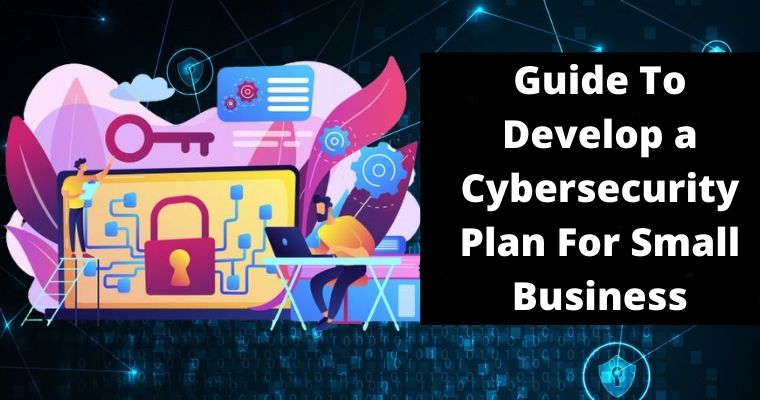As we all use more smartphones, we are becoming more dependent on technology. All information is secured in our smartphones and other devices; we are becoming more vulnerable to cyber-attacks.
Information security is becoming a worry for all organizations and individuals. Cyber security has become a sector where companies are making huge investments.
Suppose your data is not secured properly by application and network security. In that case, it can leave your data vulnerable to cyber attacks like extortion, malware installation in a company’s systems, etc.
Take an example to understand the value of information security.
Suppose you have 5 million dollars in your account, but someone hacked your information and took all that hard-earned money from your savings account.
This will be hectic and depressing for you. Right?
This is why companies invest a lot of money in cybersecurity. In this article, I will tell you about a procedure that will ensure you keep your data safe from every kind of attack.
SOC 2 Compliance ensures that their services will manage your data and will protect the privacy of your clients and institution.
Table of Contents
What is SOC 2 Compliance?
Compliance is not as simple as we think it is. When we think about how fast organizations are moving, we always think about data security, and how secure the company keeps our data. Based on that, we trust any company.
SOC is an acronym for service organization control. SOC 2 is a voluntary standard developed by the American Institute of CPAs. It is designed for organizations that want to manage customer data and protect their data.
The objective is to keep the customers’ data safe and private. It can be implemented in all those organizations that store their data in the cloud.
If any organizations store their data in the cloud, they simply want to practice their control and safeguards to protect their client’s data.
It is not all about controls and processes. It is all about the criteria required to maintain information security. It helps each company adopt practices that will help attain its objectives.
It was developed for domestic use in America, but other countries also started using SOC 2 compliance services as years passed.
What are the five trust principles of SOC 2 Compliance?
Everything that is working works on some principles. SOC 2 compliance works on five principles:
- Security
- Privacy
- Confidentiality
- Availability
- Processing integrity
These principles help SOC 2 compliance to keep the client’s data secure from all cyber attacks.
Every company is different, so its requirements for data security are also different from others. SOC 2 reports given to organizations based on these five principles are unique.
So now, let’s talk about the five principles in detail.
● Security
Security is our first principle of SOC 2 compliance. Here security means the protection of data from unauthorized devices and systems.
SOC 2 compliance keeps your data secure in many ways like
Firewalls are an important part of information technology infrastructure that helps to keep the data secure from unauthorized sources.
Two-factor authentication: Two-factor authentication plays an important role in protecting the data. Two-factor authentication means that you have to go through two steps to access the information you want.
Identification of intrusions that occur in any system: hackers often become successful in entering your system. At that time, it is very important to detect the intrusion so that the organization can take steps to block that intrusion and many more things.
Let me give you some examples to make the concept clear.
Many of you are using some online payment methods. It requires two passwords. One is required when you open the app, and the other you have to fill in when you make any payments.
Now suppose your friend snatched your mobile and wants to take money out of your account. He knows only one password.
Will it be possible to take money out of your account with only one password? No, right!! This is why two-factor authentication plays an important role to keep your data secure.
Unfortunately, if someone successfully clears the first step to access your information, the second step will help prevent that unauthorized person from accessing your data.
It’s easy to clear one stage, but it becomes difficult to clear the next step for unauthorized devices to access the information.
● Privacy
Privacy is all about preventing unauthorized devices and people to access anyone’s information.
Privacy can be maintained by following things
Encryption of data
Encryption of data is important to keep it safe from cyber attackers. It is difficult for cyber attackers to understand encrypted data.
Two-factor authentication
Two-factor authentication is the process that you have to clear before accessing your data. You have to prove twice that you are the owner of that data.
Access control by asking information-related questions like name, address or any other security information that the person has filled in while giving the information to the organization.
An example of privacy is given below.
Suppose you are doing online shopping. When you do online shopping, you make the payment through your debit cards, online payment apps and another mode of payment.
When you give your details while making the payment, those details go to the bank from the retailer. The bank checks those details, and then your payment is made.
Now think that any cyber attacker is trying to steal your information during the transferring process. It will be easy for the cyber attacker to access your data if that is in an unencrypted form.
Now think that your data is in an encrypted form. Would that be possible for a cyber hacker to understand your data? No, right!!
This is why encryption is important to maintain the privacy of any data.
● Confidentiality
Confidentiality refers to the ability to protect data from unauthorized sources. This data should be only restricted to specific people. Your data can be accessed by the company’s employees and the people helping the company protect your data.
Let’s take the example of confidentiality.
Suppose you have secured your data in any company and the company doesn’t have access to your data. How will it protect your data? How will they know whether your data is safe or not? It is not possible to protect your data without accessing it.
This is why the company needs to have access to your data. But keep in mind your data is only accessible to the company’s employees.
● Availability
Availability is the fourth principle of SOC 2 compliance. It refers to the maintenance, control and monitoring of the data. It refers to whether the company has the infrastructure and software to maintain the information.
This is basically about the company. Does it have enough things to protect the data or not? It tells about whether the company has minimum resources to mitigate the external threat or not.
Let’s understand this concept with an example.
Suppose you run a company. It’s obvious that you want to keep your customer’s data safe. You will establish some basic things so that the data won’t be vulnerable to any cyberattacks. Right..!!
Availability is the thing that if you don’t have an advanced level of security, then the basic safety you have will keep the data secure.
● Processing integrity
Processing integrity refers to the assurance that the system performs its functions as expected and that the procedures are free of any error, delay, and unauthorized access. Data processing systems work as they are accurate and authorized.
Example processing integrity is given below. You have your data in the bank. You can access that whenever you want.
Data processing systems are doing the same thing. They can access your information as authorized and at any time. The only difference is they access your information to monitor and protect it from cyber-attacks.
How many types of SOC reports are there?
There are two types of SOC reports which are unique to every organization. These reports give information about how data is managed in an organization.
There are two types of SOC 2 reports.
It refers to the vendor’s system. In this report, the third-party vendor tells about how suitable a company’s design meets trust principles.
Type 2 is a control report that tells how a company is protecting their customers’ data and how well controls are operating in the system to protect data.
Companies that use cloud services use this report to address the risks associated with any third-party technology services. The company doesn’t give these reports. Third-party auditors issue these.
What should be included in the SOC 2 Compliance checklist?
SOC 2 report has the power to affect many areas of organizational governance. Following are the things that should be included in the SOC 2 compliance checklist:
- Defining the structure of an organization.
- Making policies and procedures.
- Carry out risk assessment stage
- Make a backup and recovery plan if anything happens.
- Establishing controls.
What are the SOC 2 Compliance requirements?
The five requirements of SOC 2 Compliance are given below:
- Processing integrity.
- Privacy
- Availability
- Confidentiality
- Security
Who needs SOC 2 compliance services?
An organization that stores the client’s data in the cloud needs SOC 2 compliance services. SOC 2 compliance services keep your data secure from unauthorized access.
Let’s take an example of who needs SOC 2 compliance services. Suppose you have a company and use the cloud to store the client’s data.
Then obviously, you need something that tells you whether your system is secure enough or not. If there are loopholes in your system, you can make the system more secure by removing them.
This is why you need a SOC 2 compliance audit.
Why is SOC 2 Compliance Important?
Still, if you are unaware of the importance of SOC 2 compliance, read the following points.
Customer demand
Protecting customers’ demand from cyberattacks is what your customers want. It assures your customer that you can protect their data.
Peace of mind
SOC 2 compliance reports give peace of mind that your system is secure enough to protect the data.
Value
The report provides insights into an organization’s risk, vendor management, controls over security and many more things.
What is a SOC 2 Audit?
SOC 2 Audit report provides you with detailed information and guarantees about the service of any organization based on the five principles. There are two types of SOC Audit: type 1 Audit and type 2 Audit.
There are certain things included in the SOC Audit report. These are given below:
Opinion letter: opinion letter is about your services. How your benefits are?
Description of the service: The services you provide are mentioned in this.
Test of controls and the test results: the test of controls is taken, and then a result is declared to check the system.
Additional information and many more things.
Who can perform a SOC Audit?
A SOC 2 compliance audit can only be performed by an independent certified public accountant or any accountancy organization.
AICPA regulates SOC 2 auditors. These auditors must follow the specific guidance related to planning, executing and supervising the audit procedures.
What is the process that is involved in the SOC 2 compliance Audit?
Five steps are included in the process of SOC 2 compliance audit.
- The first step is reviewing the audit scope.
- After reviewing the audit scope, a developing project plan is made.
- In the third step, the test is taken of controls and operating effectiveness.
- After tests, the results are documented.
- In the end, the client report is delivered.
I hope this article has helped you know about SOC 2 compliance and other things related to this.



